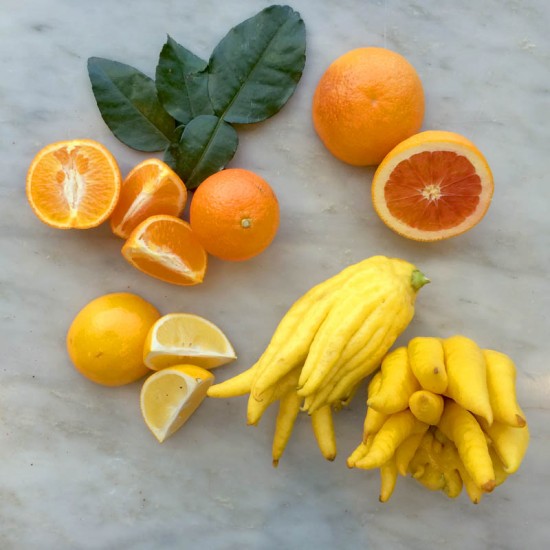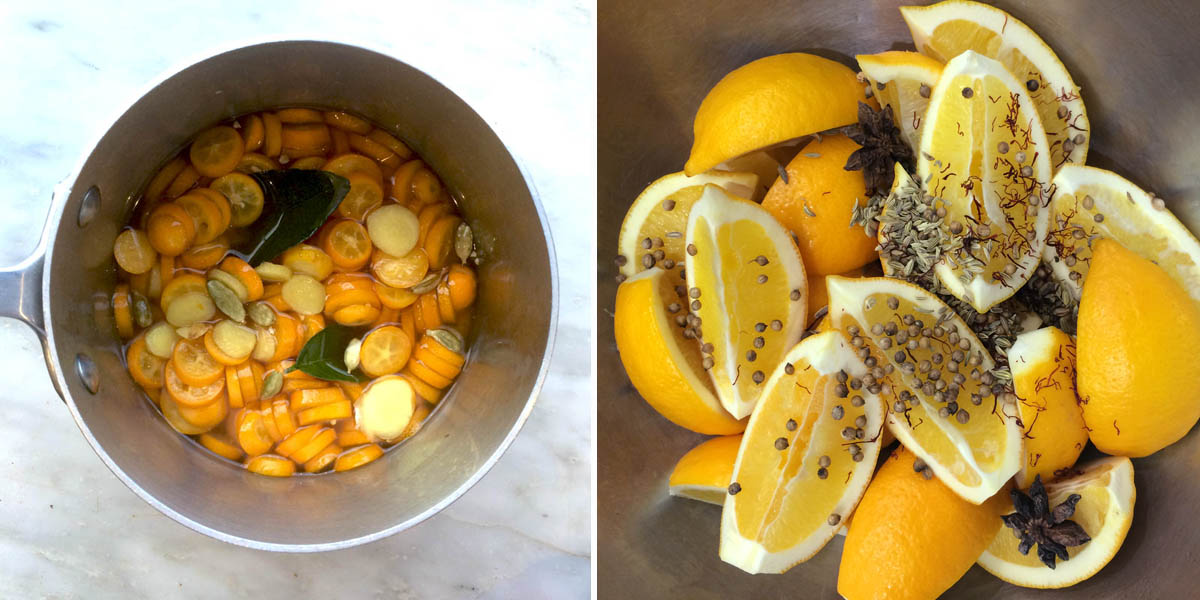Preserving seasonal produce is one of the world's oldest culinary traditions. Growing up down South, the end of summer meant two things: the start of football season and time to start “puttin’ up.”
If you’re unfamiliar with the term, puttin’ up is the act of harvesting seasonal produce and preserving it to last throughout the winter. This meant canning ripe tomatoes or peaches, blanching and freezing field peas, making jam with figs, berries and persimmons, and pickling every vegetable in sight. It’s not just a Southern thing: across the globe, you’ll find a wide range of traditional methods for extending the life of seasonal flavors.

However, down South, this mindset only seems to strike at the end of summer. I’m sure it has something to do with those stories we read to children about the little squirrel storing up his acorns before the snow falls. Yet winter can be puttin’ up season too. After all, cold weather provides us with an incredible bounty of citrus, including some highly aromatic fruits that are, in some cases, only available for a matter of weeks. This year, I’m picking my favorite unique citrus and puttin’ ‘em up!
Buddha’s hand citron is a wild-looking fruit that looks like a cross between a lemon and an octopus. It has no pulp or juice and is made up entirely of delicately perfumed rind.
Meyer lemon is less sour than the standard lemon and has a complex, floral aroma that falls somewhere on the spectrum between lemon and orange.
Mandarin orange is a small, squat orange that is closely related to (and sometimes labeled as) a tangerine. They are slightly sweeter than the standard orange, and mandarin rinds boast aromatic hints of vanilla and spice.
Kumquats hail from Southeast Asia and look like tiny, oblong oranges. Their taste can range from sour to sweet, depending on the variety. Unlike most citrus, kumquats are typically eaten whole (rind and all).
Unlike other vegetables and fruits, heat is often your enemy when preserving citrus. Of course, heat is the safest way to preserve foods—ensuring no bacteria remains behind to cause spoilage—but the delicate aromas that are unique to each citrus varietal are destroyed when heated. For that reason, we prefer to use salt or acid to create an environment where bacteria is killed and aromas survive. Below, you’ll find pickling, preserving and candying recipes for preserving seasonal citrus. 
Pickled Kumquat
- ½ cup sugar
- 2 cups white wine vinegar
- 2 tablespoons fresh ginger, sliced
- 10 cardamom pods
- 1 lb kumquat, sliced and seeds removed
Combine the sugar, vinegar, ginger and cardamom in a saucepot. Bring the mixture to a simmer, and then set aside to cool. (It is important to make sure the liquid is fully cooled before pouring over the citrus, to ensure the protection of the fruit’s nuanced flavors.) Place the kumquats in a clean jar and pour the pickling liquid over the fruit. They will be ready to eat in 24 hours.
Preserved Mandarin and Meyer Lemons
For the mandarins:
- 8 mandarin oranges
- 2 cinnamon sticks
- ½ vanilla bean, split
- 3 pods star anise
- 2 teaspoons black peppercorn
- 5 tbsp kosher salt
- 7 tbsp sugar
For the Meyer lemons:
- 8 Meyer lemons
- 2 teaspoons coriander seed
- 1 teaspoon fennel seed
- 2 pods star anise
- Pinch saffron
- 5 tbsp kosher salt
- 7 tbsp sugar
Wash the fruit well in warm water and dry. Cut the fruit into quarters and remove any visible seeds. Place the fruit in a bowl with your spices, salt and sugar. Mix thoroughly. Pack the mixture into clean jars or heavy-duty zip-close bags. If using jars, fill to top. If using bags, press out all of the excess air. Seal tightly. Store at a cool temperature (below 70˚F or in the refrigerator) and leave to cure approximately three weeks (refrigerated preserves will take longer), occasionally turning the jars or bags to shift the contents. Rinse citrus well before using.
Candied Buddha’s Hand
- 1 Buddha’s hand citron
- 1½ cups sugar, plus more as needed for finishing
- 1 tablespoon kosher salt
- Candy thermometer
Wash and dry the citron. Separate the “fingers” from the body and slice into ½-inch thick slices. Dice the body into ½-inch cubes. Taste a piece of the fruit: if it is bitter, place the pieces in a pot, cover completely with cold water and bring to a simmer. Drain the citron, discarding the water and cover with fresh water again. Bring back to a simmer and repeat one more time. (If the fruit is not bitter, you can skip this step.) In a clean pot, combine sugar, salt and 1½ cups water. Bring the mixture to a boil. Add the citron and cook at a low boil, until the temperature on a candy thermometer reads 230˚F. Stir occasionally to prevent sticking. Once cooked, remove from the heat and set aside to cool. When cool enough to handle, place the pieces on a rack and leave, uncovered, at room temperature to dry overnight. The next day, lightly toss the dried citron pieces in a bowl with granulated sugar to coat completely. Shake off any excess sugar and store in an airtight container.
Learn more about pickling, preserving and other advanced culinary skills in our career culinary arts and continuing education programs at ICE.




